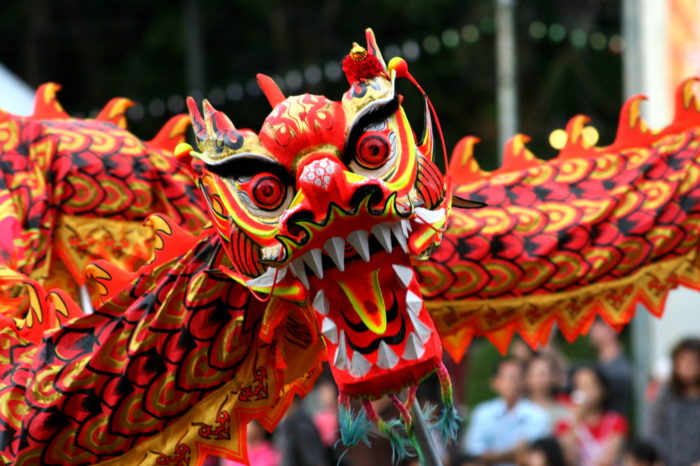Published in the Nikkei Asian Review 12/2/2015
In Japan the Year of the Sheep started on January 1st, the old lunar calendar having been scrapped back when the samurai traded their swords and top-knots for suits and ties. Recently, however, the Chinese New Year – February 19th in 2015 – has assumed new significance as tourists from mainland China flood through Japanese airports, bound for luxury hotels, department stores and ski slopes. The impact on relations between the two countries is likely to be complex and long-lasting.
Like many things Chinese, the scale and speed of the phenomenon are staggering. In 2012 China displaced Germany as the world’s largest source of outbound travellers. In 2014 the number of Chinese tourists – 110 million – comfortably exceeded Germany’s entire population.
After Prime Minister Shinzo Abe visited the controversial Yasukuni Shrine in December 2013, government-level relations between China and Japan went from chilly to Antarctic. Even so the number of Chinese visitors rose by 80% in the following twelve months. A decade ago more Americans than Chinese came to Japan. In 2014, the Chinese were six times more numerous and they spent 60% more per head than the Americans. As a result Japan’s balance of payments on tourism is positive for the first time in a blue moon.
Since there is a well attested correlation between overseas travel and GDP per head the trend is likely to continue for the foreseeable future. SMBC Nikko Securities expects total visitor arrivals to rise from 13 million in 2014 to 19 million in 2020 – of which 16 million will be from other Asian countries – and a further increase to 30 million is projected for the following decade. At the turn of the century there were a mere 4 million visitors.
In terms of discretionary spending the tourist boom is equivalent to an increase in the Japanese population of 1.4 million. The effects are already being felt everywhere from plush Ginza department stores to the electronic souk of Akihabara – where the Laox store is under Chinese ownership – and even the Yoshiwara, Tokyo’s ancient pleasure quarter, which now welcomes the tourist yen in a way unthinkable twenty years ago.
Elsewhere discount chain Don Quixote is installing tills that can handle seven different currencies. Mitsukoshi’s flagship department store is doubling the number of Chinese speaking staff for the New Year holiday and will permanently devote a floor to duty-free shopping. Major watch manufacturers like Seiko and Casio say that 10-15% of their domestic sales are made to foreign visitors.
HERE COME THE MICE
The government’s Tourism Nation program seeks to boost inbound tourism by easing visa restrictions for certain Asian countries, allowing long stays for wealthy individuals and speeding up entry procedures at airports. But the most potent form of support comes from another aspect of Abenomics – quantitative easing. Over the past two years, the yen has fallen to its lowest level since the early 1970s in real trade weighted terms. As a result, Japan has become an outstandingly cheap destination. The MICE (Meetings, Incentives, Conferences & Exhibitions) type of tourism has yet to take root, but surely will.
Until recently in Japanese eyes a typical foreigner meant a white Westerner. Now the foreigners that ordinary Japanese meet in the flesh – as they increasingly will – are likely to be fellow Asians and mostly Chinese. A significant mental adjustment will be required to cope with this new reality. Could there be a backlash? It’s certainly possible. After all the last time Japan saw this many foreigners, they were wearing US army uniforms. It will surely be disconcerting to find favourite restaurants, beauty spots and hot spring resorts packed with wealthy citizens of neighbouring countries. So far, though, pragmatism prevails and any complaints have been drowned out by the ringing of cash-registers.
The effect on China is less obvious, but potentially more far-reaching. Given their big spending, the mainland Chinese visiting Japan are likely to be amongst the wealthiest and best educated people in their country. By the end of the next decade there should be a significant number of Chinese citizens – 10% of the overall population, perhaps – who have experienced Japan at first hand. Hopefully this influential group will ignore their government’s periodic recourse to anti-Japanese vituperation and spread the word about a peaceful and sophisticated society from which there is still much to learn.
Foreign travel doesn’t necessarily broaden the mind or promote warmer relations, as has been shown by British football hooligans bringing mayhem to European cities and American college kids whooping it up in Mexico on the “spring break”. Furthermore, Japan and China are so frequently at loggerheads because their national interests clash, not because of misunderstandings and misperceptions. The bones of contention are not simply going to disappear.
Even so individuals from different cultures generally get on together better than their governments. Interacting, however briefly, with people who live under different political and legal systems offers the possibility of taming the fires of aggressive nationalism and dissipating the sense of uniqueness. Over time sightseeing tours and intensive shopping sprees are likely to be a far greater force for change than foreigners lecturing about democracy.
